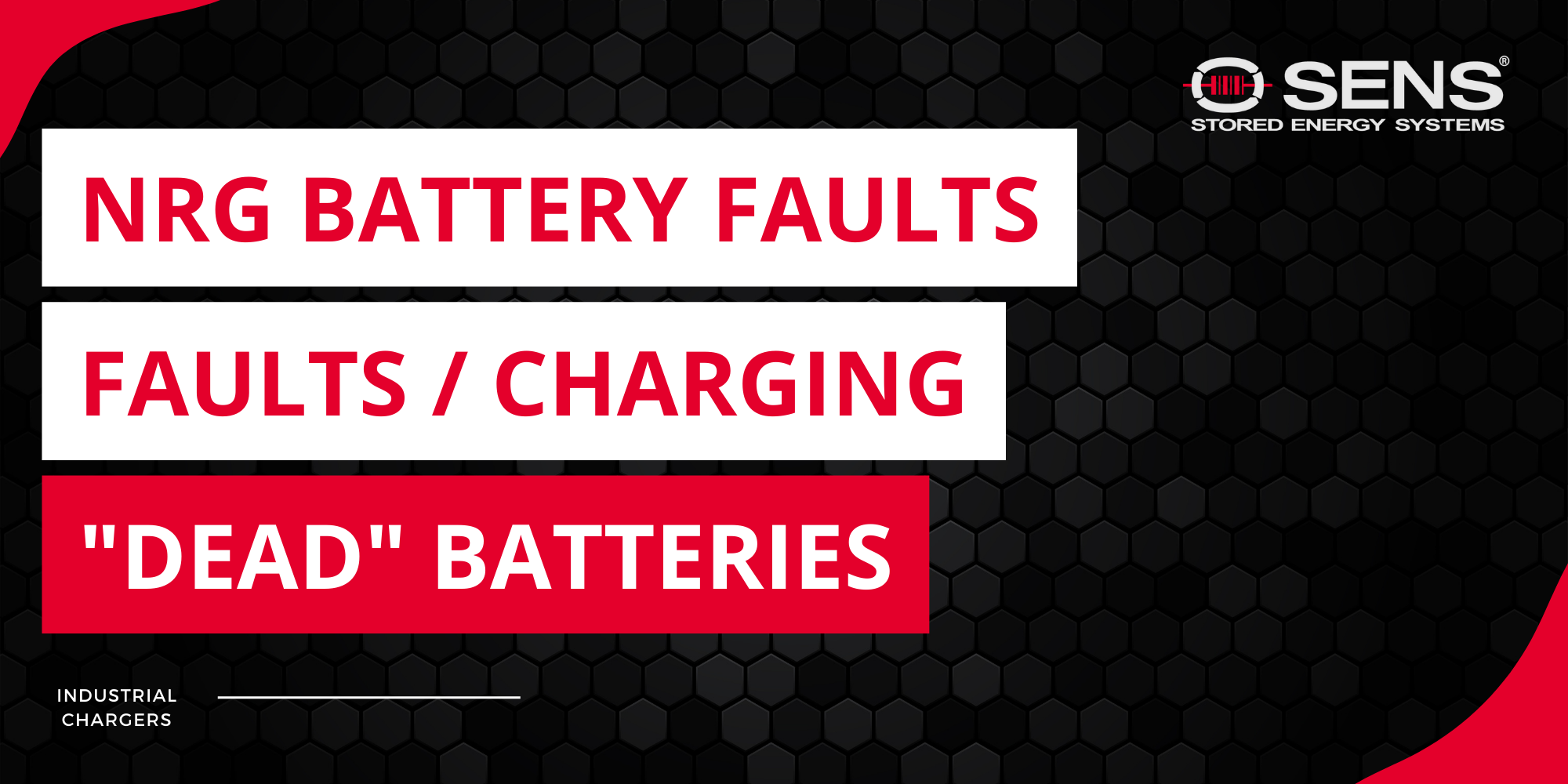1 min read

SENS NRG 10 and 20 amp genset battery chargers are equipped with Battery Fault protection that will prevent the charger from producing output under several conditions, including cases where batteries are excessively discharged. When this occurs the battery fault LED will be illuminated. This tech tip describes why this happens and how to correct the issue.
Battery faults are indicated by an NRG charger when:
• No battery is connected
• Battery polarity is reversed
• A 24V charger is connected to a 12V battery and vice versa
• DC wiring is too long or uses too small of a gauge of wire
• Low battery voltage (< 9V/18V for a 12V/24V system)
Under any of these circumstances the Battery Fault protection will lockout the charger. To prevent lockout, 1) verify that the battery is connected with the correct polarity, 2) verify that the 12/24V jumper on the charger’s circuit board matches the voltage of the attached battery, and 3) make sure that appropriate DC cable size and lengths are employed (see manual).
One you have completed these verifications, place a jumper in the JUMP position on the charger circuit board. The JUMP feature will override Battery Fault to allow charging of an excessively discharged battery and to initially commission batteries, if required. Once the JUMP feature is activated the Battery Fault LED will flash about once a minute to indicate that the charger is working. Just remember, Battery Fault protects against reversed polarity of DC wiring and connecting a battery of the wrong voltage, so only leave a jumper in the JUMP position after permanent installation is complete.
If these steps fail to correct the issue, it is likely that the battery requires replacement.